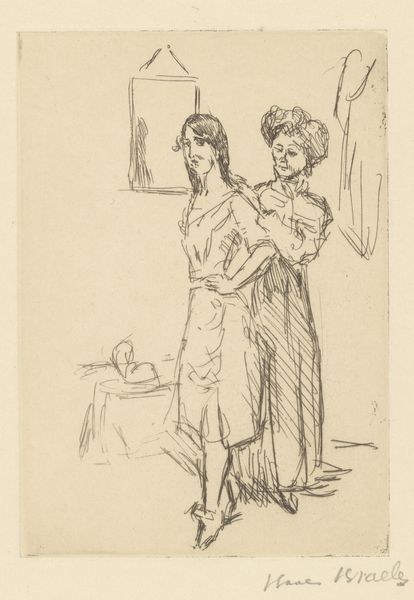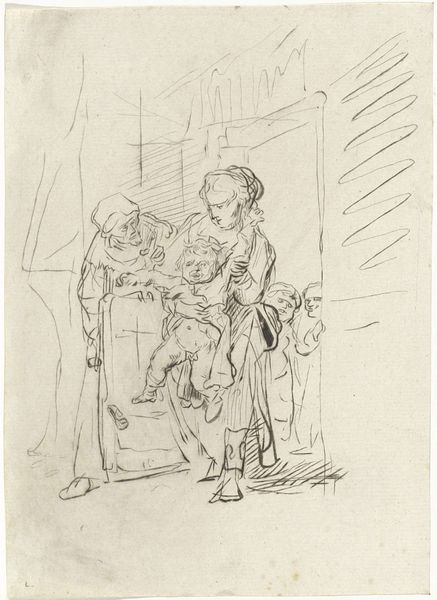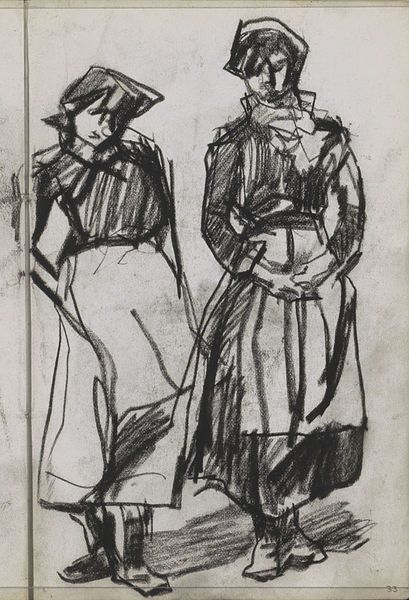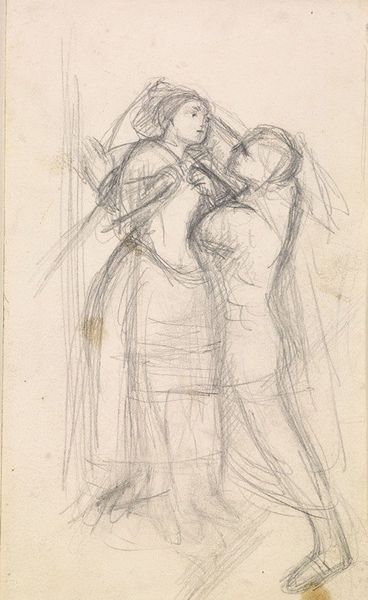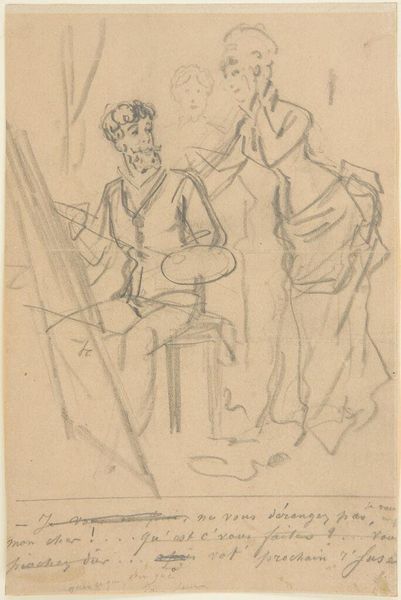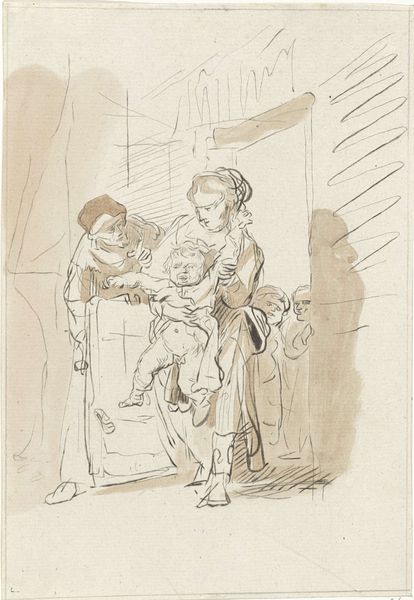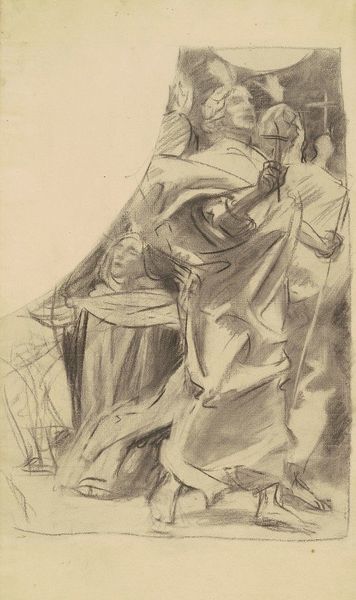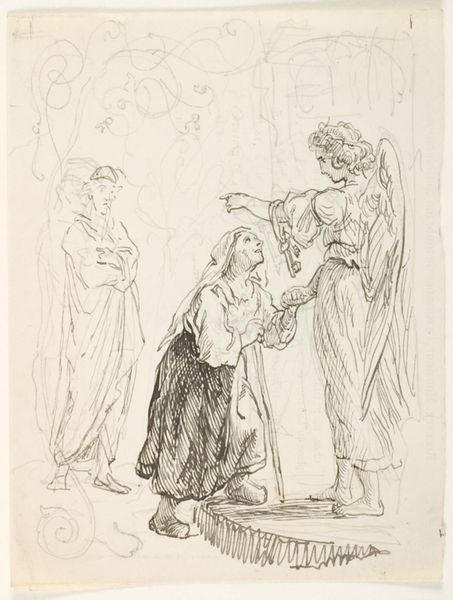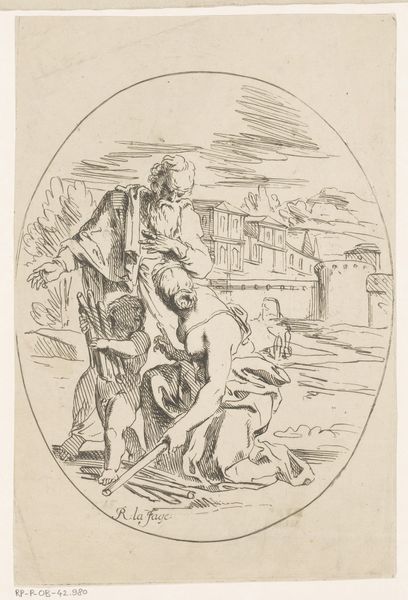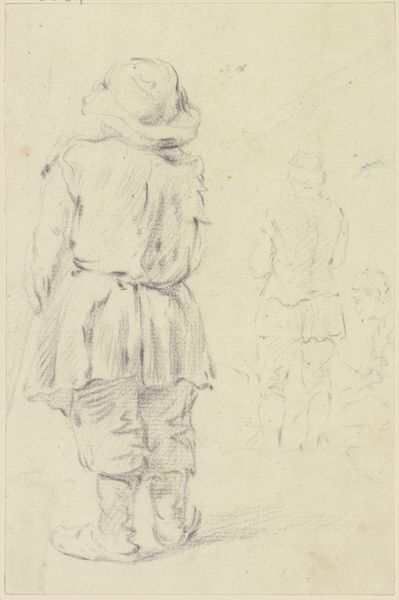
drawing, print, ink
#
portrait
#
drawing
# print
#
figuration
#
ink
#
cityscape
#
genre-painting
#
realism
Dimensions: plate: 18.7 × 11.3 cm (7 3/8 × 4 7/16 in.) sheet: 33.2 × 25.3 cm (13 1/16 × 9 15/16 in.)
Copyright: National Gallery of Art: CC0 1.0
Curator: Isabel Bishop’s "Summer Travelers, No. 2" from 1958. It’s an ink drawing and print. Editor: It looks hurried, incomplete, like a momentary impression captured from a moving train or bus. The figures almost blend with the sketched environment. Curator: Bishop was interested in portraying the everyday lives of working women in urban spaces. Her artistic output reflects a society transitioning, post-war, and reassessing the roles and representations of women in the public sphere. We can contextualize her imagery with discussions around gender, class, and visibility within the city's fabric. Editor: I see that immediately. The lines emphasize the texture of their clothing and capture the kind of wear-and-tear present in textiles made for practical use and, possibly, re-use. Their summer outfits made of different materials are juxtaposed, drawing attention to the materiality of ordinary urban living. Curator: Right, she challenges typical romanticized or sexualized portrayals of women by showcasing their labor, mobility, and social interactions. The image makes visible their mundane movements across cityscapes. Consider this work in conversation with feminist artists like Barbara Kruger. Editor: Bishop's printmaking suggests a move towards democratization too, towards multiplying and distributing her imagery among different audiences. And this print feels handmade. I wonder about the plates she was using, the pressure of her hand—it creates a different visual economy than mechanical reproduction. Curator: Absolutely, and she pushes us to investigate the tensions and politics around women’s agency in defining the image itself. There's also a level of nuance in this picture. The women look different but there isn't judgment. She reflects lived realities and resists neat categorization. Editor: True. Thinking of the ethics of representation, I'm drawn to consider her chosen materials, processes, even what seems discarded, the backgrounded figures; this reminds us that everything—process, context, audience—impacts our engagement with the imagery. Curator: By interweaving urban space, representation, labor, and printmaking, Bishop initiates important dialogues, connecting with many discussions we have even now around labor conditions and marginal representation. Editor: Right, understanding production, labor, materials allows us insight to not only the image itself but who creates them, for whom they are created, and in which socio-historical and political setting this occurs. That kind of layered inquiry deepens any appreciation for this art.
Comments
No comments
Be the first to comment and join the conversation on the ultimate creative platform.


